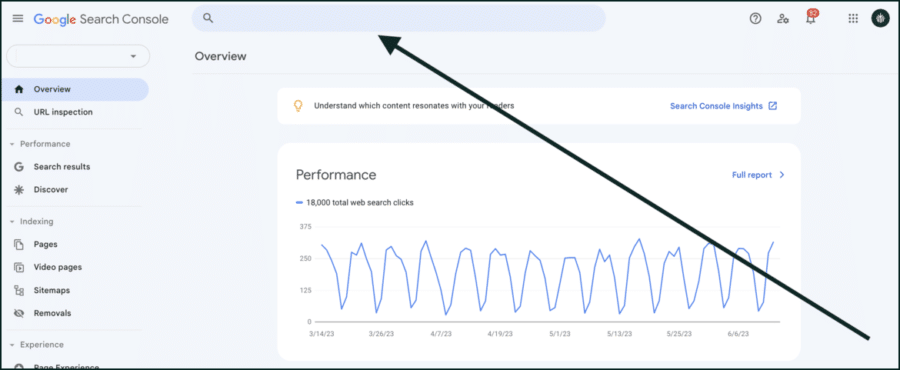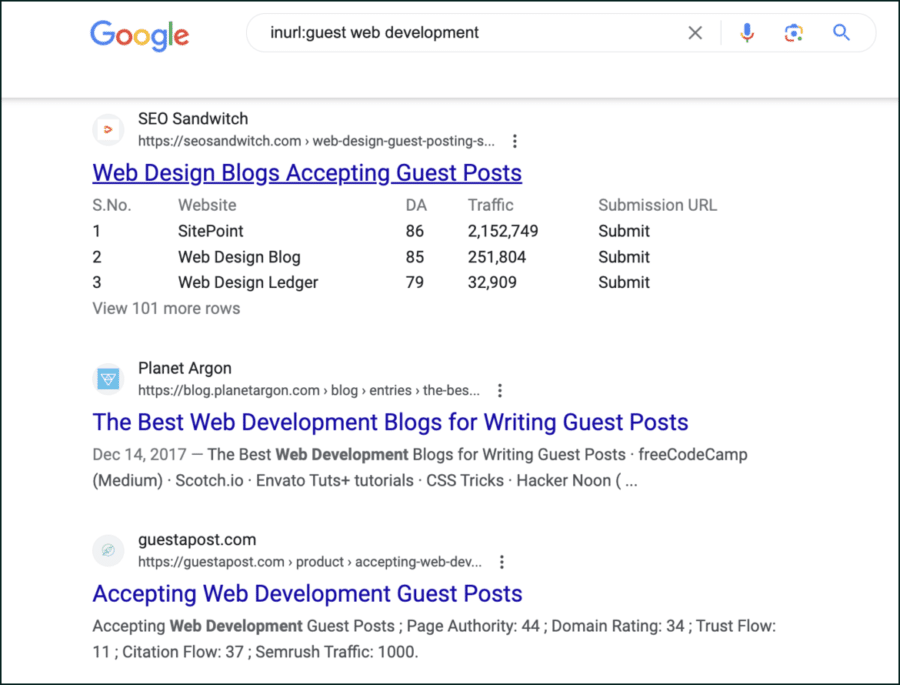Full-fledged link building campaigns can drive massive results for businesses. But what about the little guys that can’t afford to pay for a link building service?
Inbound links are one of the three most influential ranking factors, so your SEO strategy can’t just ignore link building.
Link building can be a very time-intensive process, but there are also dozens of small-scale link building opportunities that can drive great results for smaller brands.
Over the past few years, we’ve tested dozens of different link building techniques, and we’re going to share some of our favorites in this article.
We’ll break down each of these strategies one-by-one, delving into exactly how to start incorporating each tactic into your digital marketing efforts.
Note: We’ll avoid talking about the more time-intensive approaches to building links like broken link building. We’re also going to avoid talking about black-hat link building tactics like getting links from private blog networks (PBNs), link exchanges, and buying spammy, low-quality backlinks.
Simple Ways to Build Backlinks
Here are a few simple yet effective link building strategies. We’ll elaborate on them in detail in the sections below:
- Image credit link building: Sharing images with bloggers so they credit you with a link
- Providing expert quotes: Sharing quotes with journalists so they credit you with a link
- Content syndication: Publishing your blogs and case studies on multiple sites (LinkedIn, Medium, etc.) and linking back to the original on your website
- Sponsorships: Sponsoring events so the event’s website credits you with a link
- Guest posting: Writing blogs for another website and linking back to your own
- Unlinked brand mentions: Asking for links from sites that mention your brand name
We have some more link building tips at the bottom of the page, so keep reading to learn how to earn inbound links so you can improve your site’s website rankings.
1. Image Credit Link Building
If you’re anything like me, you played a lot of sports growing up.
If you’re a lot like me, you had zero athletic ability growing up.
Fortunately, you still won the championship every few years because of the talent of the rest of the players on your team.
Similarly, image credit link building helps you to ride on the coattails of successful websites to capture some of their success.
Image credit link building consists of finding high-quality articles in your industry that lack imagery. Once you find these articles, design a new visual and send it over to the author. This could be an infographic, illustration, or stock image with customized styling incorporated into it.
If well designed, many of these authors will add your visual and provide a link back to your website below their new image.
Despite being artistically inept, this tactic has helped me to get backlinks from high-authority sites like Scoop.it. For those who are equally poor designers, try using a tool like Canva or Snappa to simplify the design process.
2. Providing Expert Quotes
I always like to say that getting one backlink from the New York Times will count for more than a backlink from a hundred personal blogs.
That being said, how would you get a backlink from the New York Times?
Sure, brands like Amazon might be casually featured every time they lift a finger, but getting featured in a major publication is much more difficult for smaller brands.
Fortunately, journalists are constantly pushing out new content. One of the biggest bottlenecks in this process is collecting expert feedback.
More and more journalists are turning to online tools like Help a Reporter Out to collect expert quotes. These journalists almost always provide a link back to your website if they choose to use you as a source. Journalists at larger publications may receive dozens of responses for one query, so take time to craft detailed responses whenever submitting to these journalists.
Also, if you do have a budget for link building and would like some placements in high-profile publications like Forbes and Entrepreneur, reach out to our friends at Quoteful. They focus on building high-quality links from the most visible sites on the internet (and they do a fantastic job at it).
3. Content Syndication
Syndicating your newly published articles to other sources is a great way to boost content visibility and gain additional backlinks.
After publishing a new article, syndicating that article to a host of different platforms is one of our favorite ways to build backlinks and additional visibility. Some of our favorite content syndication platforms are LinkedIn, Medium, and Business2Community.
As powerful as this may be, there are risks to syndicating content. The biggest risk is that the syndicated post will prevent the article that lives on your website from appearing in search results.
Here’s what can cause that to happen:
When Google discovers duplicate content, it will try to identify the original source of the content. It then decides to only show the “original source” in search results.
One of the easiest ways for search engines to identify the “original source” is to look through their index and figure out which source was indexed first.
High-authority sites tend to be crawled much more frequently than low authority sites, which leaves a site like LinkedIn as much more likely to be seen as the original source of an article than your website if you were to publish your article on both sources at the same time.
So how do I prevent this?
Here’s the best way to prevent this is to take two precautionary steps before syndicating any of your articles:
- Tweet your newly published article. Twitter and Google have a relationship that allows Tweeted URLs to be indexed far quicker than normal.
- Manually submit your newly published article to Google Search Console to be indexed faster.
How to Index an Article with Google’s Fetch and Render Tool
Open up Search Console and paste the URL of your new article in the search bar.
You’ll be redirected to a page that will show the following image. Select “Request Indexing” and wait for the page to reload.
Indexation times will vary, but we’ve seen articles get indexed within minutes of using this approach.
One final step: before syndicating your articles, do a Google site search to ensure that your article has been indexed. To do this, type “site:[article URL]” into Google and see if your article pops up.
If I were doing a site search for the Inter website, I would type in the following:
If your article pops up, you’re ok to syndicate your articles. If not, try running this site search again in 24 hours and see if your article has been indexed.
Looking for help with scaling your business? See how our link building helped one hosting provider to grow 35% in 3 months.
4. Sponsorships
For those who are heavily focused on local business, community sponsorships can be a great technique for building backlinks and brand awareness. One of our favorite examples of this is sponsoring a group on Meetup.com.
Event organizers on Meetup.com pay $30/month to keep their group running. Start a Meetup group and add your business as the primary sponsor. You’ll get a dofollow backlink from a website with an Ahrefs domain rating of 91 out of 100 (at the time of writing, the 316th most reputable website on the internet).
Here are some other ideas for local sponsorships:
- Volunteer at your local Chamber of Commerce
- Offer free mentorship to a nearby college (this could result in a .edu backlink, which is extremely valuable)
- Buy a pizza every month for a local business networking group
5. Guest Blogging
Guest blogging, or publishing blog posts on other websites, is a great way to build thought leadership and develop links from high authority sites.
Here’s how to write for top tier publications:
- List a few topics that you feel confident writing in-depth articles about
- Identify websites whose readers might be interested in 2-3 of your topic ideas
- Send personalized messages to those sites pitching your topic ideas and offering to write for their site
How do you find guest posting opportunities? Let us explain:
How to Find Guest Blogging Opportunities
Here are a few of our favorite tricks for finding sites to publish your blog:
- Reach out to people that you’re already connected to in your industry
- Participate in LinkedIn and Facebook groups. Reach out to regular contributors offering to write an article for their site
- Go to Google and search “inurl:guest [topic that you are hoping to blog about].” For example, in writing a guest post about puppies, I would search “inurl:guest puppies.” (more on Google search operators here)
The majority of sites that appear in Google for this search parameter have hosted guest articles about the searched topic in the past. These sites will be much more likely to host a guest article in the future.
For example, selecting “Past week” would only yield search results that have been published in the past week.
Once you find a list of sites, use a tool like Hunter to find the email address of their editor (or webmaster, if no other email address is available). Pitch a handful of relevant blog topics and highlight your experience in the industry.
Write a quality piece of content for these bloggers that do respond and watch the new links pour in.
Ready to take your business to the next level? See how our content marketing services combine quality content creation and link building to scale businesses like yours.
Bonus: Unlinked Brand Mentions
Ok, I lied.
We couldn’t end this post without mentioning unlinked brand mentions – one of our favorite link building tactics for larger brands. As the name implies, unlinked brand mentions are blog articles, news stories, etc. where a company mentions your brand without linking back to your website.
Those who know how to monitor this can reach out to these companies and ask that the company link back to your website. We usually frame this request as a way to make it easier for their readers to find out more about our company.
There are dozens of tools that you can use to monitor this, but our favorite (free) tool is Google Alerts.
Google Alerts allows you to set up emails to be delivered to your inbox whenever Google discovers a new article that mentions a specific word or phrase (i.e., your brand name).
From there, you can open any of these articles and check to see that they linked back to your site. If not, send off a quick email requesting a link – most journalists will add the link.
Additional Techniques for Building a Stronger Link Profile
- Add internal links across your website to pass link juice across your site.
- Use social media to generate social shares and drive more visibility to your content. Some people will link to these pages as additional resources for their readers.
- Incorporate relevant external links into your articles (this will further legitimize your content in the eyes of your customers and search engines as a legitimate source of information).
- Find people in your industry who regularly create expert roundups, then reach out to them and offer to contribute to their next roundup.
- Offer to provide testimonials to local businesses or companies that you work with – many will feature your testimonial on their homepage with a link back to your site.
- Share valuable insights on other blogs in the form of blog comments. Blog commenting will often provide nofollow links back to your site. This will have minimal impact on your website authority. However, it can drive qualified visitors back to your site if the comment provides value to the reader.
- Pay attention to the speed at which you build links (or you could put yourself at risk of a manual action from Google).
Link building is a crucial part of search engine optimization. Although large-scale link building campaigns can drive significant results for your business, those operating on a tight budget can start with the link building methods described above.
Getting serious about growing your business? Learn about how our content marketing and SEO consulting services can help you to 2x your potential customers.
SCALE YOUR ORGANIC TRAFFIC
Subscribe to our monthly newsletter








